Your SUV’s cooling system faces its ultimate test as summer temperatures climb. An overheating vehicle can turn from an inconvenience to an emergency in minutes for families planning long road trips or daily commuters stuck in sweltering traffic.
Modern SUVs come with sophisticated cooling systems, but not all are created equal. Some models consistently maintain optimal temperatures even during extreme heat waves, while others become notorious for their cooling system failures and temperature gauge warnings.
This comprehensive guide examines five SUVs with exceptional heat management capabilities that keep occupants comfortable and mechanical components functioning properly during hot weather.
We’ll also highlight five models with documented histories of overheating issues that potential buyers should approach with caution. From cooling system design to heat-resistant materials and technological innovations, we’ll explore what makes certain SUVs more summer-friendly than others.
Whether you’re shopping for a new vehicle or wondering if your current SUV will handle the upcoming heat, this analysis provides valuable insights for every driver concerned about performance in high temperatures.
5 SUVs That Stay Cool in Summer
These exceptionally engineered SUVs feature oversized cooling systems and intelligent thermal management that maintain optimal temperatures even during desert driving or stop-and-go traffic with the AC blasting.
Their generously proportioned radiators and high-capacity cooling fans prevent temperature gauge movement even when towing maximum loads up steep grades in triple-digit heat.
Strategic computer programming prioritizes engine cooling over comfort when necessary, seamlessly adjusting fan speeds and water pump flow rates to prevent dangerous temperature spikes.
Owners confidently tackle challenging conditions like Death Valley in July or hours of standstill traffic without the anxiety of temperature warnings or the degraded performance that plagues lesser vehicles.
1. Toyota Land Cruiser
The Toyota Land Cruiser has earned legendary status not just for its off-road capabilities but for its exceptional reliability in extreme conditions.
Engineered with desert environments in mind, the Land Cruiser features one of the most robust cooling systems in the SUV market.
The vehicle employs a high-capacity radiator coupled with additional auxiliary transmission coolers that work harmoniously to dissipate heat efficiently even during prolonged driving in scorching temperatures.
Toyota’s engineers have implemented a sophisticated airflow management system that maximizes cooling efficiency while minimizing drag.
The front grille and bumper design optimize air intake, directing cooler air directly to the radiator and engine components that need it most.

This thoughtful aerodynamic design prevents the common heat buildup issues that plague many SUVs during the summer months.
The Land Cruiser’s cooling prowess extends beyond just the engine compartment. Its climate control system features multi-zone capabilities with high-performance compressors that maintain comfortable cabin temperatures regardless of exterior conditions.
Advanced thermal insulation materials throughout the cabin effectively block heat transfer from the exterior, keeping passengers comfortable without overtaxing the air conditioning system.
Owners frequently report that even when traversing desert terrain in 100+ degree temperatures, the Land Cruiser’s temperature gauge rarely moves past the midpoint.
Toyota’s preventative approach to heat management includes strategically placed heat shields that protect sensitive components from exhaust system thermal radiation.
The manufacturer also utilizes high-temperature-resistant materials for key engine gaskets and seals, minimizing the risk of deterioration from heat cycling.
The vehicle’s electronic cooling fan system operates with remarkable intelligence, adjusting to changing conditions by increasing fan speed precisely when needed rather than running constantly.
This not only improves cooling efficiency but also contributes to better fuel economy and reduced system wear.
For drivers in hot climates, the Land Cruiser offers peace of mind with its proven track record of thermal stability under the most challenging conditions.
2. Subaru Forester
The Subaru Forester stands out among compact SUVs for its exceptional thermal management capabilities that keep it running cool even during scorching summer conditions.
At the heart of the Forester’s cooling prowess is Subaru’s horizontally-opposed Boxer engine configuration, which inherently provides better heat dissipation than conventional inline or V-type engines.
This unique layout creates more space around the engine block, allowing for improved airflow and more efficient cooling.
Subaru engineers have complemented this natural advantage with a high-efficiency cooling system featuring an aluminum radiator with an optimized fin design that maximizes heat transfer.
The Forester employs a sophisticated electric cooling fan system that operates independently of engine RPM, ensuring consistent cooling regardless of driving conditions.
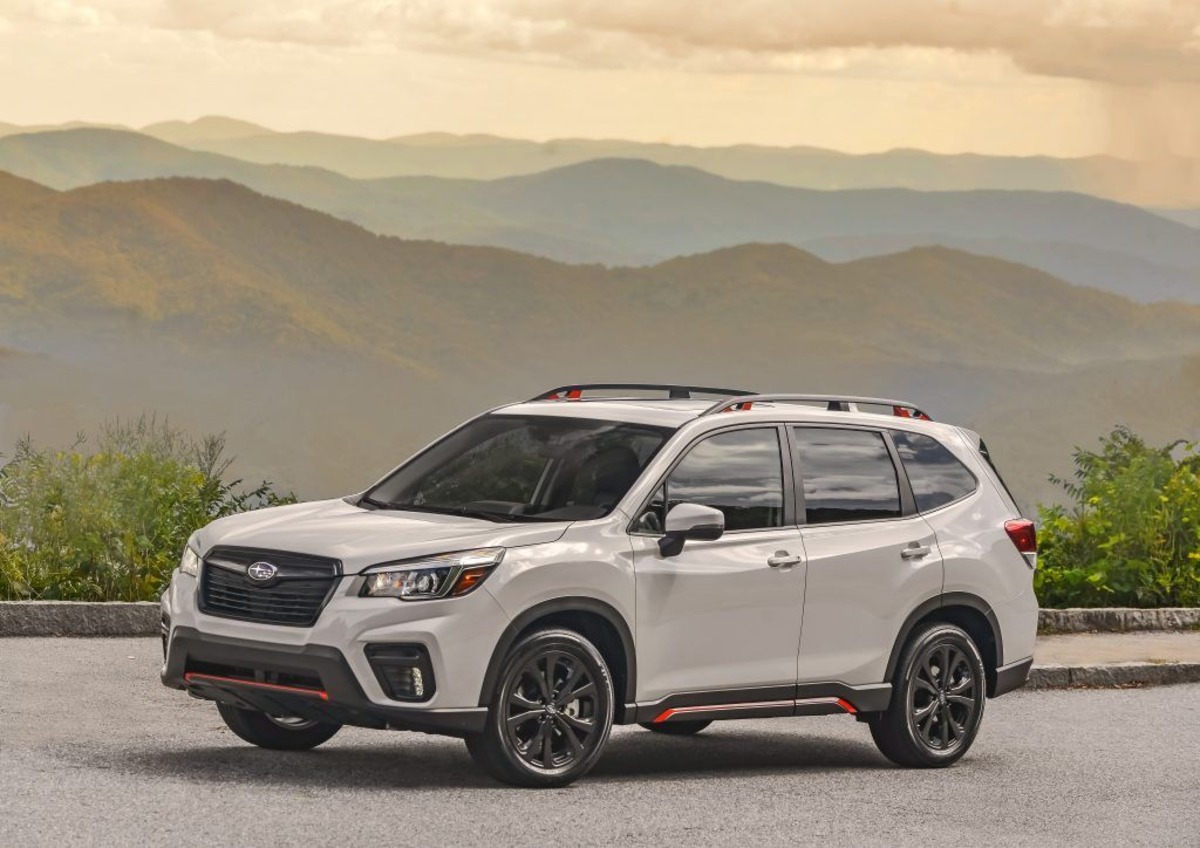
This system intelligently adjusts cooling fan speed based on multiple temperature sensors throughout the powertrain, preventing heat buildup before it becomes problematic.
The Forester’s symmetrical all-wheel-drive system distributes mechanical stress evenly across the drivetrain components, preventing any single component from generating excessive heat, a common issue in vehicles with front-wheel-drive-based AWD systems.
This balanced power distribution reduces thermal stress on the transmission and differential components, areas where many competing SUVs struggle during extended high-temperature operation.
Subaru has incorporated additional thermal protection features that contribute to the Forester’s excellent hot-weather performance.
The continuously variable transmission (CVT) comes equipped with a dedicated fluid cooler that maintains optimal operating temperatures even during demanding driving scenarios like steep mountain climbs or towing.
Meanwhile, the cabin benefits from Subaru’s attention to thermal insulation, with strategically placed heat shields and insulating materials that block engine and road heat from entering the passenger compartment.
Owners in hot-climate regions consistently praise the Forester for maintaining comfortable interior temperatures quickly and efficiently.
The vehicle’s climate control system incorporates large-capacity evaporator and condenser components that deliver exceptional cooling performance without straining the system.
This thoughtful integration of cooling technologies makes the Subaru Forester an excellent choice for drivers concerned about vehicle performance and comfort during the hottest months of the year.
3. Mercedes-Benz GLE
The Mercedes-Benz GLE represents the pinnacle of German engineering when it comes to heat management in luxury SUVs.
Mercedes has applied decades of experience in motorsports thermal management to create a vehicle that maintains optimal operating temperatures even in the most challenging conditions.
The GLE features a sophisticated cooling module that integrates multiple radiators, intercoolers, and oil coolers into a single, efficient unit, maximizing cooling potential while minimizing space requirements.
Central to the GLE’s thermal excellence is Mercedes’ advanced water-cooled charge air system that dramatically reduces intake air temperatures before they reach the combustion chamber.
This technology not only prevents heat-related power loss but also contributes to the engine’s thermal stability during prolonged operation in hot environments.
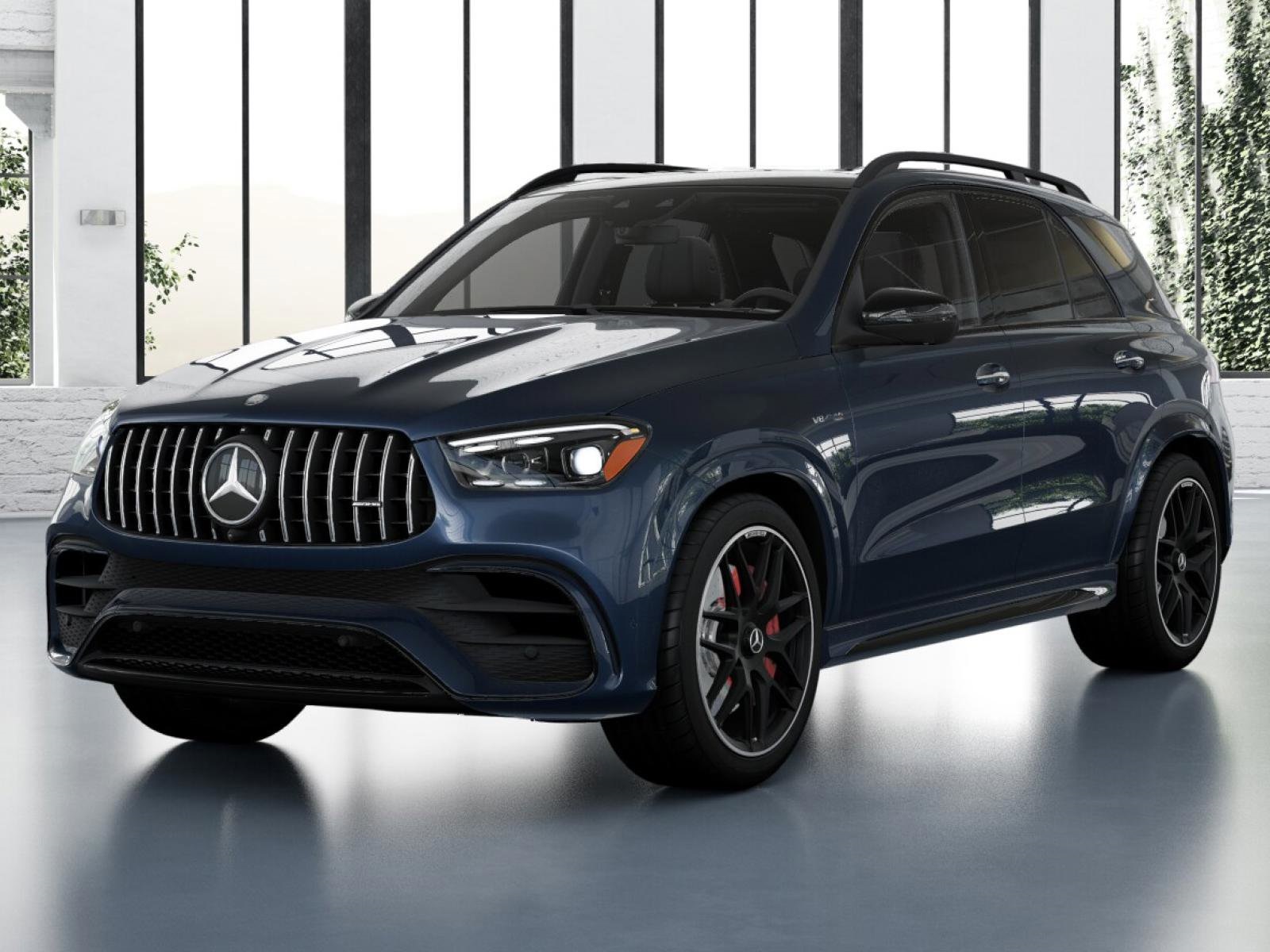
The GLE’s cooling system is precisely calibrated through thousands of hours of testing in extreme conditions, from Death Valley’s scorching desert to high-altitude mountain passes.
The vehicle’s electronic thermal management system represents another technological marvel that gives the GLE its exceptional heat resistance.
Unlike conventional thermostats that operate based on single-point temperature readings, the GLE employs multiple temperature sensors throughout the powertrain, constantly analyzing data and adjusting cooling parameters for optimal performance.
This proactive approach prevents localized hot spots from developing and compromises engine efficiency.
Inside the cabin, the GLE demonstrates equal commitment to passenger comfort in hot weather. The climate control system features Mercedes’ patented nano-particulate air filtration that not only purifies incoming air but also enables more efficient cooling.
The SUV’s panoramic sunroof incorporates special heat-reflective glass that blocks infrared radiation, preventing the greenhouse effect that makes many SUVs unbearable during summer months.
Ventilated seats with active cooling further enhance passenger comfort by removing body heat directly at the contact points.
Mercedes-Benz has also incorporated innovative materials throughout the GLE that contribute to its excellent thermal performance. Heat-reflective paint options, ceramic-coated exhaust components, and thermally optimized insulation materials work together to manage heat transfer efficiently.
For drivers who prioritize both luxury and technical excellence, the GLE delivers exceptional summer performance that justifies its premium price point.
4. Volvo XC90
The Volvo XC90 stands as a testament to Scandinavian engineering excellence, particularly when it comes to thermal management systems that keep this luxury SUV running cool in even the most demanding conditions.
Volvo’s approach to heat management begins with the fundamental design of the XC90’s powertrain. The company’s Drive-E engines feature an innovative compact design with integrated exhaust manifolds that allow for more precise temperature control.
This configuration enables faster warm-up in cold conditions while providing enhanced cooling pathways that prevent overheating during extended high-load operation.
The XC90’s cooling system incorporates a high-capacity radiator with precision-engineered cooling channels that maximize surface area while minimizing airflow resistance.
This design allows the radiator to dissipate heat more efficiently than conventional units, maintaining optimal operating temperatures even when the vehicle is heavily loaded or towing.
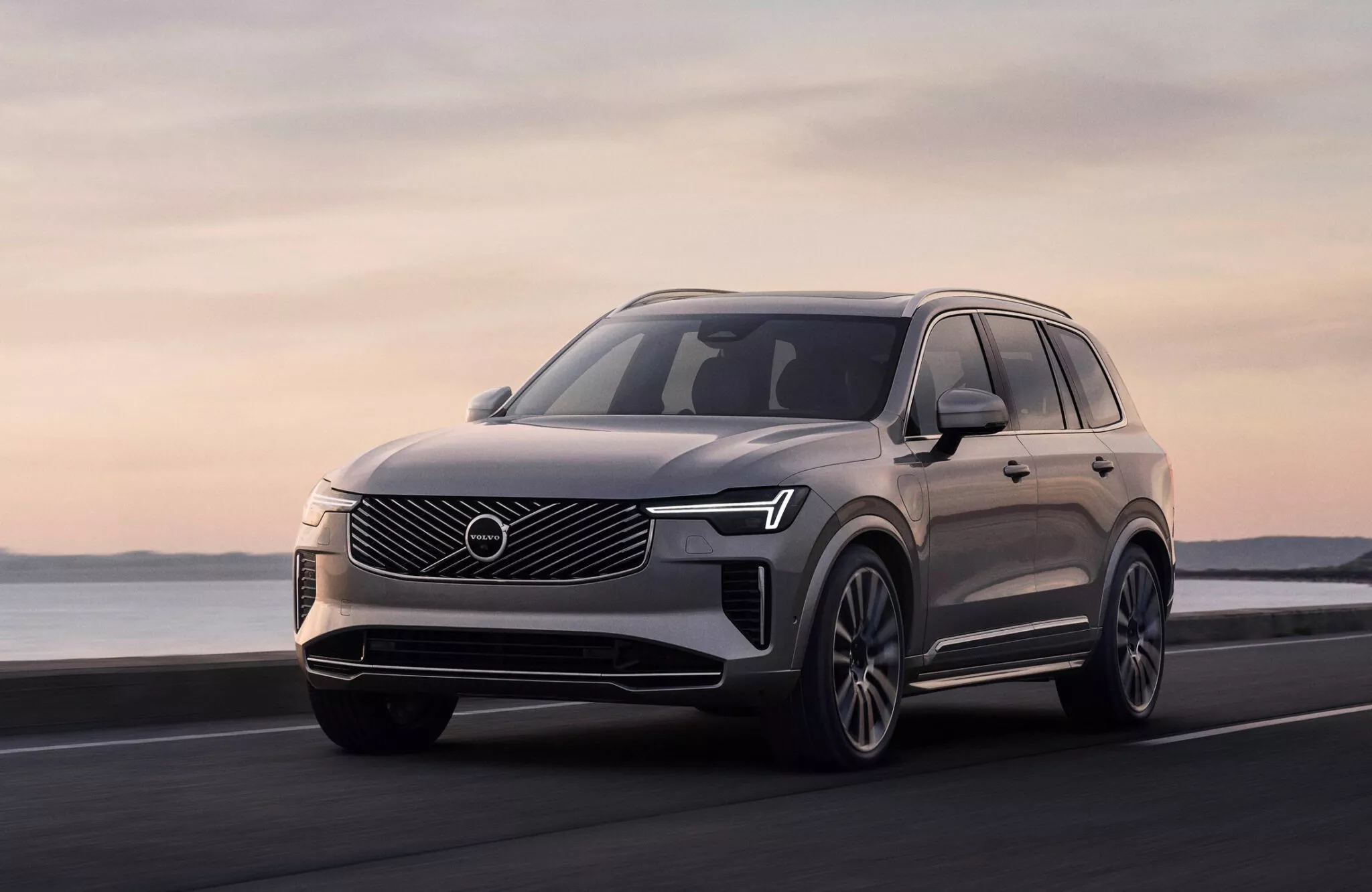
Complementing this is Volvo’s intelligent electronic cooling management system that constantly monitors and adjusts coolant flow based on real-time operating conditions and driver demands.
One of the XC90’s most innovative features is its advanced thermal management for hybrid variants, which face unique cooling challenges due to the dual power sources.
The T8 Recharge model incorporates separate cooling circuits for the battery pack, electric motor, and internal combustion engine, ensuring that each component operates within its ideal temperature range.
This segregated approach prevents thermal interference between systems while maximizing the efficiency of each cooling circuit.
The XC90’s excellent summer performance extends to passenger comfort as well. Volvo’s CleanZone climate system features a multi-filter approach that not only purifies incoming air but also improves the efficiency of the air conditioning system by reducing particulate load.
The four-zone climate control allows precise temperature management throughout the cabin, while Volvo’s thoughtful attention to insulation prevents heat transfer from the powertrain or road surface into the passenger compartment.
Perhaps most impressive is Volvo’s holistic approach to vehicle cooling. Rather than focusing exclusively on preventing overheating, Volvo engineers designed the XC90’s thermal systems to contribute to vehicle efficiency.
The intelligent thermal management system minimizes parasitic losses from cooling system operation, contributing to better fuel economy without compromising temperature control.
For families seeking a summer-ready luxury SUV that combines sophisticated engineering with practical reliability, the Volvo XC90 represents an excellent choice that remains composed even in the most challenging heat.
Also Read: 5 Crossovers That Rarely Need Suspension Work and 5 That Constantly Do
5. Kia Telluride
The Kia Telluride has rapidly established itself as a cooling system standout in the midsize SUV category, demonstrating that exceptional thermal management doesn’t require a luxury price tag.
Kia’s engineers approached the Telluride’s heat management challenges with particular attention to real-world durability, resulting in a cooling system that maintains consistent performance throughout years of operation in diverse climate conditions.
The Telluride features an oversized radiator and cooling fans with greater-than-category-average capacity, providing substantial thermal headroom that prevents borderline overheating scenarios common in less robustly engineered vehicles.
What truly distinguishes the Telluride is Kia’s implementation of advanced electronic cooling management.
The system continuously monitors data from multiple temperature sensors positioned throughout the powertrain and adjusts cooling parameters accordingly.
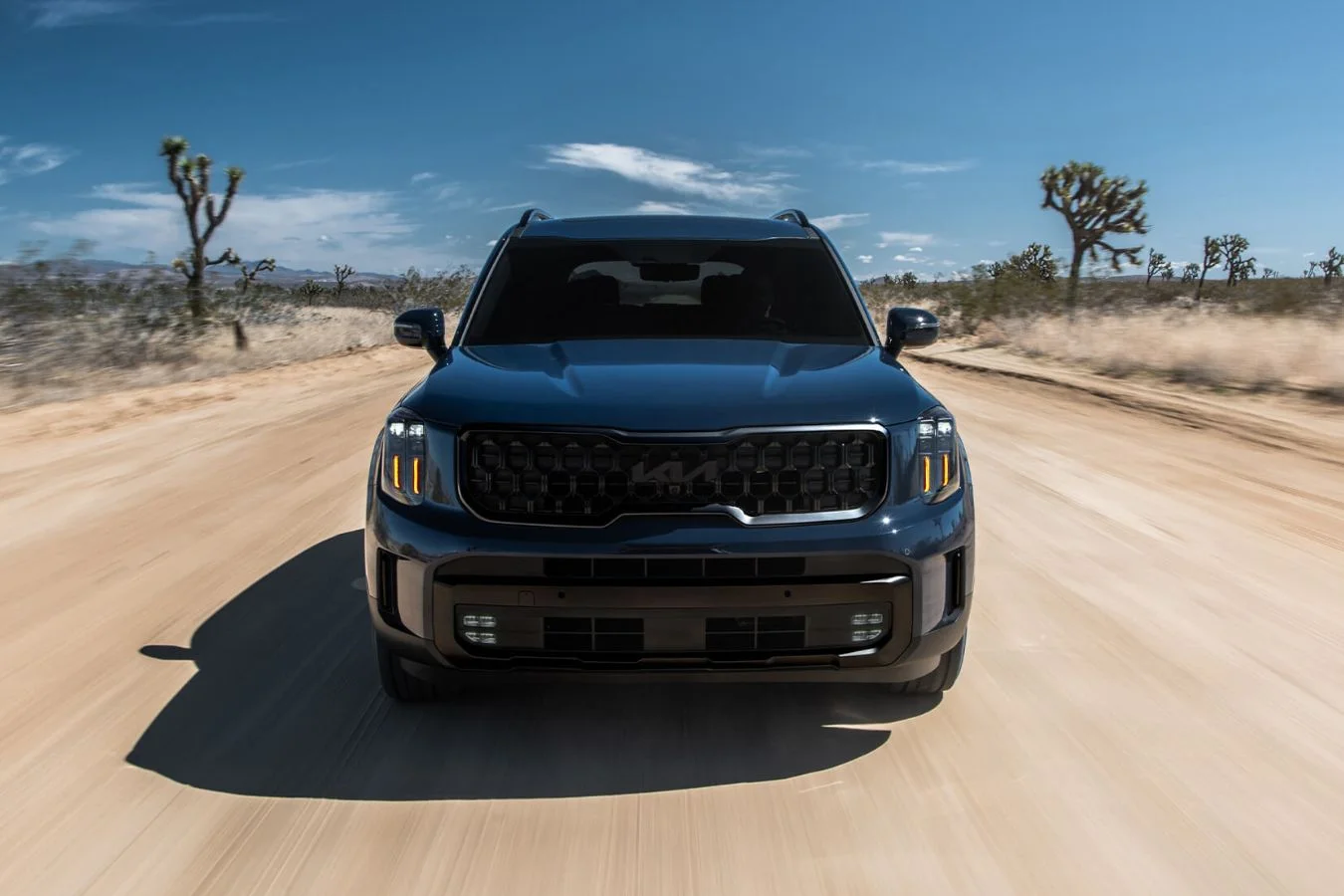
This intelligent approach ensures optimal cooling efficiency while minimizing the power drain associated with constant cooling fan operation.
During highway cruising, the system can reduce cooling system draw to improve fuel economy, while immediately ramping up capacity when sensors detect increased thermal load during towing or steep ascents.
The Telluride also benefits from Kia’s considerable investment in aerodynamic design that facilitates efficient engine bay cooling.
Computer-modeled airflow pathways direct cooler external air precisely where it’s needed most, while carefully designed exit vents prevent the recirculation of hot air through the engine compartment.
This optimized airflow management helps maintain lower underhood temperatures even during stop-and-go traffic in summer heat, a scenario that typically challenges cooling systems.
Cabin comfort during hot weather is another area where the Telluride excels. The tri-zone climate control system features oversized evaporator and condenser components that deliver exceptional cooling performance without straining the system.
Thoughtfully designed air distribution channels ensure even temperature throughout the cabin’s three rows, while solar-control glass reduces thermal radiation entering the passenger compartment.
Owners consistently report that the Telluride’s air conditioning system maintains comfortable interior temperatures even in triple-digit external heat.
Kia has further enhanced the Telluride’s summer performance through attention to auxiliary cooling systems.
The transmission oil cooler ensures stable operating temperatures during demanding driving scenarios, while the power steering fluid cooling system prevents the fluid breakdown that can occur in lesser vehicles during extended operation in high temperatures.
These supplementary systems demonstrate Kia’s comprehensive approach to thermal management and help explain why the Telluride has earned such high marks for reliability and performance in hot climates across the country.
5 SUVs That Constantly Overheat
These problematic models feature undersized cooling systems and poor airflow management that struggle to maintain safe operating temperatures during completely normal summer driving conditions.
Their temperature gauges climb alarmingly during routine scenarios like highway cruising with the air conditioning running or crawling through typical urban traffic on warm days.
Owners report developing driving habits specifically to prevent overheating, from avoiding hills during hot weather to turning off the AC and blasting heat to reduce engine temperatures, compromises no modern vehicle should require.
What begins as occasional temperature warnings often progresses to expensive repair bills for head gaskets, warped cylinder heads, and complete cooling system overhauls that could have been prevented with proper engineering.
1. Jeep Cherokee (2014-2018)
The 2014-2018 Jeep Cherokee models have become notorious in automotive circles for their persistent overheating issues, particularly those equipped with the 2.4L Tigershark engine.
Despite the Cherokee’s popular styling and off-road capabilities, its cooling system design has proven inadequate for maintaining proper operating temperatures during extended operation in warm climates.
The root cause lies in several interconnected engineering decisions that created a perfect storm of thermal management challenges for owners.
The Cherokee’s primary cooling system deficiency stems from an undersized radiator that struggles to dissipate heat effectively during demanding conditions.
This fundamental limitation is exacerbated by the vehicle’s tightly packed engine compartment that restricts critical airflow around heat-generating components.
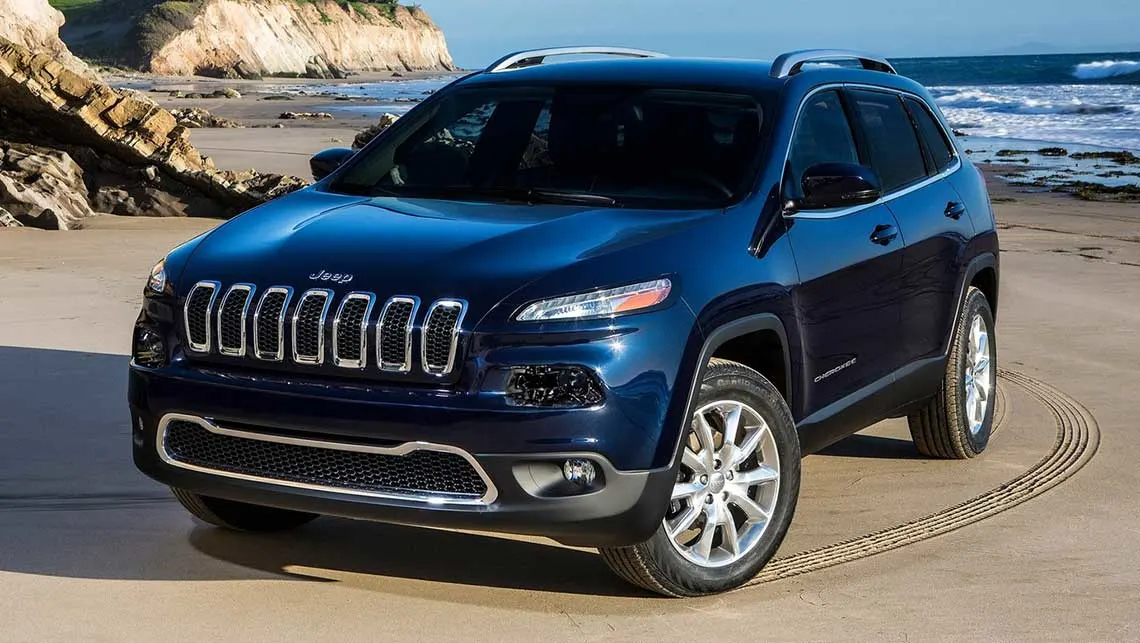
The confined space creates heat-trapping dead zones where temperatures can climb dangerously high, particularly around the exhaust manifold and cylinder head.
Owners frequently report temperature gauge readings climbing into the red zone during normal highway driving in summer months a clear indication of inadequate cooling system capacity.
Compounding these design issues is the Cherokee’s problematic electronic cooling fan system.
Numerous owners have documented cases where the cooling fans either fail to activate at appropriate temperatures or operate at insufficient speeds to provide adequate airflow.
The system’s control module has proven prone to electrical glitches that can leave the cooling fans inoperative precisely when they’re most needed.
Jeep has issued multiple technical service bulletins addressing these electronic cooling system failures, suggesting a recognized but incompletely resolved design deficiency.
The Cherokee’s transmission cooling system has proven equally problematic, with the nine-speed automatic transmission generating excessive heat during normal operation.
The factory-installed transmission cooler lacks sufficient capacity to manage this heat load effectively, leading to premature transmission fluid breakdown and potential long-term damage to transmission components.
Many owners report transmission overheating warnings appearing on the dashboard during summer driving, particularly when towing even small loads well within the vehicle’s advertised capacity.
For prospective buyers considering a used Cherokee from these model years, the cooling system issues represent a significant concern that could lead to expensive repairs.
Current owners frequently resort to aftermarket solutions such as auxiliary transmission coolers and upgraded radiators to address these deficiencies, modifications that add cost and complexity but have become necessary for those operating these vehicles in warmer climates.
Despite the Cherokee’s many positive attributes, its cooling system shortcomings make it difficult to recommend for drivers who regularly face high-temperature conditions.
2. Range Rover Evoque (2012-2016)
The Range Rover Evoque captured attention with its striking design and luxury appointments, but the 2012-2016 models have developed a concerning reputation for persistent overheating issues.
Unlike some vehicles with obvious single-point cooling system failures, the Evoque suffers from a constellation of thermal management problems that collectively compromise its reliability in warm weather.
These issues have led to raised warranty claim rates and significant owner dissatisfaction, particularly in regions with consistently high summer temperatures.
At the heart of the Evoque’s cooling challenges is its inherently compromised cooling system architecture. The vehicle’s aggressive styling prioritized aesthetics over thermal management, resulting in restricted airflow channels and insufficient radiator capacity.
The sleek front-end design limits the effective surface area available for heat exchangers, while the compact engine bay creates thermal congestion that prevents efficient heat dissipation.
These fundamental design constraints place the cooling system under stress even during moderate-temperature operation, leaving minimal thermal capacity for challenging conditions.

The Evoque’s water pump has emerged as a particular point of failure within the cooling system.
The factory-installed pumps frequently exhibit premature wear, developing leaks or impeller damage that compromises coolant circulation. This reduction in coolant flow velocity creates localized hotspots within the engine, particularly around the cylinder heads and exhaust valves.
Workshop manuals reveal that Land Rover recognized this issue, recommending water pump replacement as a preventive measure during routine service, an unusual admission of a component not designed for the vehicle’s full service life.
Electronic cooling management also proves problematic in the Evoque. The thermostat and temperature sensors frequently provide inaccurate readings to the engine control module, resulting in delayed fan activation and improper coolant flow regulation.
Owners report that temperature gauges can remain deceptively normal even as the engine approaches dangerously high thermal conditions.
This sensor calibration issue means the vehicle’s warning systems may not alert drivers to developing overheating situations until significant damage has already occurred.
Perhaps most concerning is the Evoque’s tendency to develop coolant leaks from multiple points within the system.
The plastic coolant reservoir frequently develops stress cracks, while hose connections and quick-connect fittings deteriorate prematurely when subjected to the high temperatures created by the inadequate cooling system.
These leaks create a dangerous cycle where coolant loss further compromises the already marginal cooling capacity, accelerating the progression toward overheating events.
Despite the Evoque’s luxurious appeal, these persistent cooling issues make it a problematic choice for drivers in warm climates.
3. Nissan Pathfinder (2013-2016)
The 2013-2016 Nissan Pathfinder represents one of the more dramatic examples of cooling system regression in a modern SUV.
While previous generations had established a reputation for robust reliability, this fourth-generation model introduced a completely redesigned cooling system that proved inadequate for maintaining proper operating temperatures, particularly in the CVT transmission.
The resulting overheating issues have generated numerous class-action lawsuits and left many owners facing expensive repairs far earlier than expected.
The Pathfinder’s most significant thermal management failure centers on its continuously variable transmission (CVT), which generates substantially more heat than conventional automatic transmissions.
Nissan equipped these models with an integrated transmission fluid cooler within the radiator, a design that not only provides insufficient cooling capacity but also creates a dangerous single point of failure.
When the transmission fluid overheats, it accelerates the breakdown of critical internal components, leading to the characteristic shuddering, hesitation, and eventually complete transmission failure that many owners have experienced.
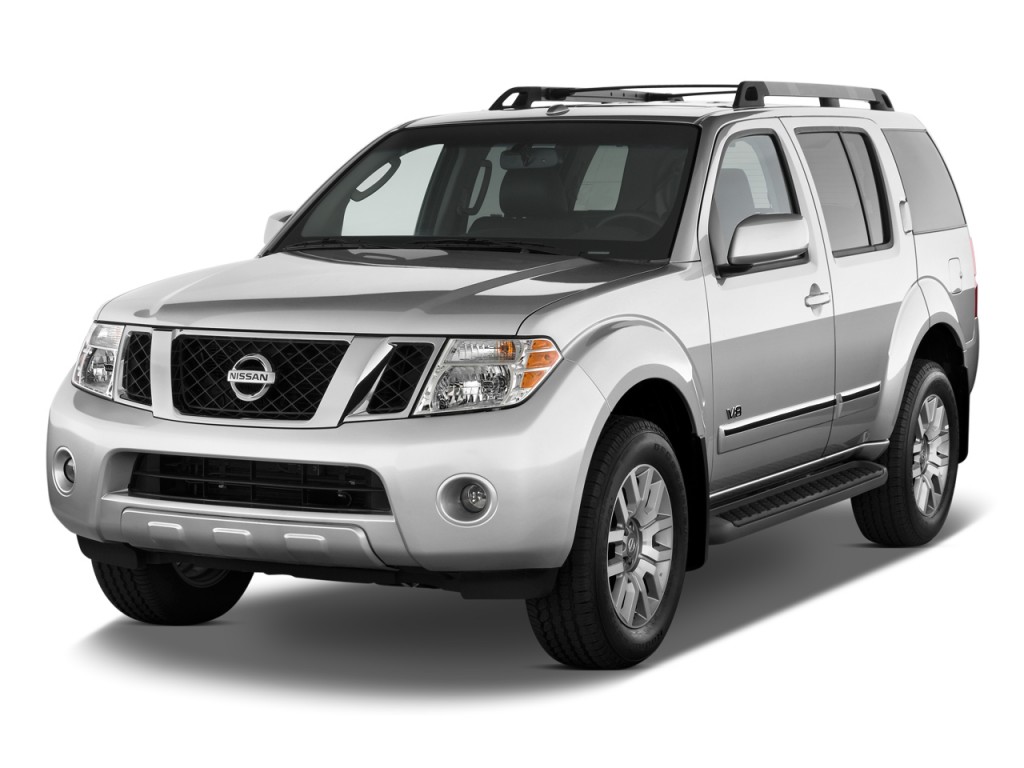
Exacerbating the transmission cooling issues is the Pathfinder’s problematic cooling system control strategy.
The electronic cooling management system frequently maintains coolant temperatures at the upper end of the acceptable range to improve fuel economy and emissions performance.
This approach leaves minimal thermal margin for handling increased loads during towing, mountain driving, or operation in high ambient temperatures.
Owners report that the temperature gauge quickly climbs into the danger zone during normal summer driving scenarios that similar vehicles handle without incident.
The Pathfinder’s engine cooling system suffers from its design deficiencies. The coolant flow paths through the cylinder heads create uneven temperature distribution, with the rear cylinders (particularly cylinder #6) running significantly hotter than the others.
This thermal imbalance leads to accelerated wear on those cylinders and can contribute to head gasket failures when the cooling system is already operating at its limits.
Technical analysis reveals that the coolant passages are simply too small to handle the heat load generated by the 3.5L V6 engine during sustained operation.
For consumers considering a used Pathfinder from these model years, the cooling system issues represent a major potential liability.
Nissan eventually extended warranty coverage for some components and made design modifications in later production years, tacitly acknowledging the severity of the problems.
Nevertheless, owners in warmer climates continue to report overheating incidents even with these modifications, suggesting the fundamental design issues were never fully resolved.
The Pathfinder’s cooling system woes serve as a cautionary tale about the risks of prioritizing fuel economy and cost reduction over robust thermal management.
4. Ford Explorer (2011-2015)
The 2011-2015 Ford Explorer models have established a troubling pattern of cooling system failures that frequently leave owners stranded and facing expensive repairs.
Despite Ford’s significant investment in promoting the Explorer as a reliable family vehicle, these model years suffer from inherent design flaws in their thermal management systems that become particularly evident during summer operation.
The issues affect both the 3.5L V6 and the EcoBoost engine options, though they manifest in slightly different ways between the two powertrains.
The Explorer’s cooling system problems begin with an inadequately sized radiator that struggles to dissipate the heat generated during normal operation, particularly in the turbocharged EcoBoost variants.
The radiator’s fin design and core thickness provide insufficient heat rejection capacity, causing coolant temperatures to climb steadily during extended driving.

This fundamental limitation is compounded by Ford’s decision to use lower-quality plastic end tanks on the radiator, which frequently develop stress cracks after repeated thermal cycling.
These cracks lead to coolant leaks that further compromise the already marginal cooling system performance.
Water pump failures represent another common thermal management issue in these Explorer models.
The water pump is driven by the timing chain and positioned inside the engine, a location that makes early detection of leaks almost impossible and replacement extremely labor-intensive.
When the water pump begins to fail, it often leaks coolant directly into the engine oil, creating a dangerous situation where the driver may have no warning until significant engine damage has occurred.
Service records indicate that water pump replacement rates for these Explorers far exceed industry averages, suggesting a fundamental design or material deficiency.
The Explorer’s electronic cooling fan system has proven equally problematic. The fan control module frequently malfunctions due to its vulnerable location in the engine bay, where it’s subjected to excessive heat, ironically, the very condition it’s designed to prevent.
When the control module fails, the cooling fans either stop working entirely or operate at reduced speed, dramatically diminishing the radiator’s already limited heat rejection capacity.
Owners report that these fan failures typically occur during the hottest summer months when cooling system demands are highest.
For Explorer owners in warm climate regions, these cooling system issues have turned ownership into a stressful experience filled with constant monitoring of temperature gauges and anxiety about potential breakdowns.
Ford issued multiple technical service bulletins addressing these problems, but the recommended repairs often provided only temporary solutions rather than addressing the fundamental design limitations.
Potential used car buyers should approach these Explorer model years with extreme caution, particularly if they live in regions with hot summer temperatures where these cooling system deficiencies become most apparent.
5. Chevrolet Equinox (2010-2017)
The 2010-2017 Chevrolet Equinox, particularly models equipped with the 2.4L EcoTec engine, has become infamous among mechanics and owners alike for its persistent overheating issues.
What makes the Equinox’s thermal management problems particularly concerning is that they often develop gradually and can cause catastrophic engine damage before becoming readily apparent to the average driver.
These cooling system deficiencies have significantly impacted the model’s reliability ratings and resale values, especially in warmer climate regions where the problems manifest most severely.
The primary cooling system flaw in these Equinox models stems from a poorly designed cylinder head that promotes uneven heat distribution and coolant flow restrictions.
The head gasket design creates areas with insufficient coolant circulation, leading to localized hot spots that can cause warping and eventual gasket failure.

Engineering analysis reveals that the water jacket design simply doesn’t provide adequate cooling to critical areas around the exhaust valves and upper cylinder walls, creating thermal stress that the materials cannot withstand over time.
Compounding these design issues is the Equinox’s problematic thermostat housing, which is constructed from low-grade plastic that degrades when repeatedly exposed to the high temperatures it’s meant to regulate.
As this plastic deteriorates, it develops hairline cracks that allow coolant to leak slowly from the system.
Because these leaks often start small and occur in difficult-to-see locations, many owners don’t notice the problem until coolant levels have dropped critically low, by which point significant engine damage may have already occurred.
The Equinox’s cooling fan control strategy represents another area of concern. The vehicle’s engine control module is programmed to minimize cooling fan operation to improve fuel economy, often allowing engine temperatures to rise higher than ideal before activating the fans.
While this approach may help meet fuel economy targets, it leaves minimal thermal margin for handling increased loads or higher ambient temperatures.
Owners frequently report that even after addressing known cooling system defects, their Equinox still runs consistently hotter than comparable vehicles from other manufacturers.
General Motors has issued numerous technical service bulletins related to these cooling system problems, and eventually extended warranty coverage for some components in recognition of the widespread issues.
However, these actions came too late for many owners who had already experienced expensive engine failures directly attributable to the cooling system deficiencies.
For consumers considering a used Equinox from these model years, a thorough pre-purchase inspection by a qualified mechanic with specific attention to the cooling system is essential to avoid inheriting these costly problems.
Also Read: 5 Cars That Hold Alignment Perfectly and 5 That Constantly Drift

